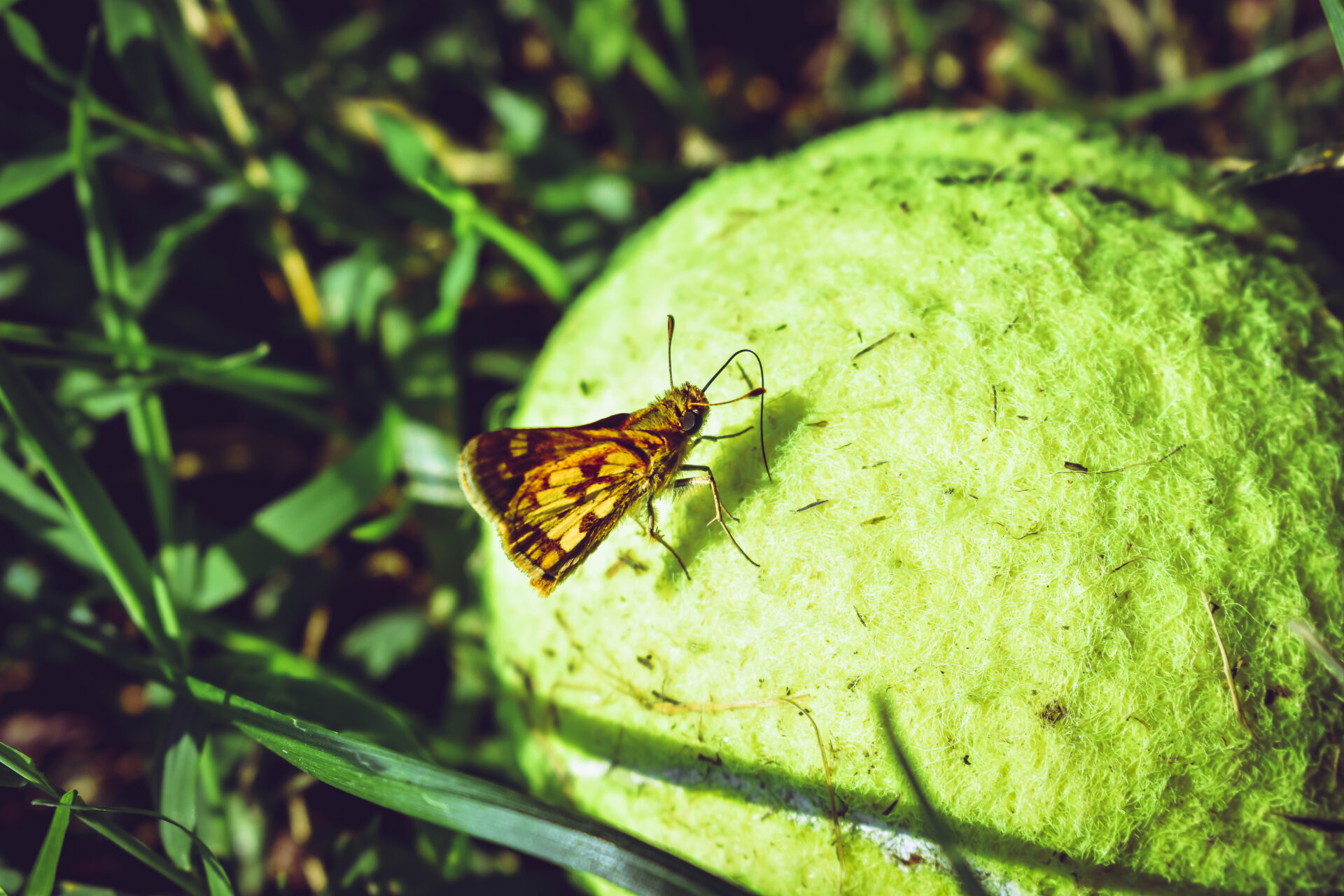Moth balls are widely used to keep away snakes from humans and their properties. It is believed that the strong smell of the mothball will keep snakes away from the area where it is placed. This article will explore how effective mothballs are in keeping snakes away, and what other methods can be used to successfully deter snakes from entering a property.No, moth balls do not keep away snakes.
What Are Moth Balls?
Moth balls are small balls of chemical pesticide and deodorant, primarily used to deter moths and other insects from infesting fabrics, carpets, and stored clothing. They can also be used to keep rodents away from stored items. The active ingredient in mothballs is usually either naphthalene or paradichlorobenzene. Mothballs have an overpowering odor that can last for months and permeate through clothing and fabrics. The strong smell is what deters moths from infesting fabrics.
Mothballs are usually sold as flakes, beads, or cakes. They should not be confused with flea powder or other insecticides, as mothballs do not target the same type of insects as these other products do. In order to work properly, mothballs must be placed in an airtight container so that the smell can accumulate and the fumes will be concentrated. Proper placement of mothballs will help ensure that they are effective at deterring insects and keeping stored items safe from damage.
Ingredients of Moth Balls
Moth balls are a pest control product used to keep moths and other insects away from clothing and fabrics. They are also known as camphor balls, naphthalene balls, and naphthalene flakes. The main active ingredients in moth balls are either naphthalene or paradichlorobenzene (PDB). Both of these chemicals work to deter moths and other insects by producing a strong odor that is unpleasant to them.
Naphthalene is a white, crystalline solid with a strong odor. It has been used for many years as an insect repellent, but it can be dangerous if inhaled or ingested in large amounts. It can also be combustible when exposed to heat or flame, making it a potential fire hazard.
Paradichlorobenzene (PDB) is another common active ingredient in mothballs. It is a white solid with an odor similar to that of mothballs. PDB is more stable than naphthalene and does not pose the same fire hazards as naphthalene does. However, it is still toxic if inhaled or ingested in large amounts and should be kept away from children or pets.
In addition to the active ingredients, mothballs may contain other chemicals such as talc, clay, dyes, fragrances, and preservatives. These additional ingredients help make the product more effective at deterring moths and other insects and also help make the product more appealing to consumers.
Benefits of Using Moth Balls
Moth balls are a popular method of controlling moths and other pests. They are a simple, affordable, and effective way to protect your clothes and other fabrics from damage. The benefits of using moth balls include:
• They are an easy and cost-effective way to control moths. Moth balls are readily available at most stores, so you don’t have to worry about spending too much money on them.
• Moth balls can be used in closets, drawers, and other areas where moths may enter. This makes them easy to use and helps you keep track of where you need to place them in order to get the best results.
• Moth balls help protect your clothes and fabrics from damage caused by moths. The strong smell of the moth balls will repel moths away from your clothing and other fabrics, preventing damage or discoloration from occurring.
• Moth balls are non-toxic and do not contain any harmful chemicals or ingredients that could be harmful to humans or animals. This makes them a safe option for controlling moths without any risks associated with using chemical insecticides or pesticides.
In conclusion, moth balls provide an easy, affordable, and effective way to control moths in your home or office without any risks associated with using chemical insecticides or pesticides. They can be used in closets, drawers, and other areas where moths may enter in order to protect your clothing and other fabrics from damage caused by these pests.
Risks of Using Moth Balls
The use of moth balls can present potential health risks to both humans and pets. While the active ingredient in moth balls, naphthalene, is an effective insecticide, it can also be toxic if inhaled or ingested. It has been linked to neurological problems, nausea, vomiting, and even liver damage when exposed at high levels for extended periods of time. In some cases, it can cause anemia due to a lack of red blood cells.
In addition to health risks, moth balls also pose a risk of fire. The ingredients used in moth balls are combustible and can easily ignite when exposed to heat or open flames. When these combustible materials come into contact with another material that is also flammable, such as dry wood or paper, the fire can quickly spread and cause serious damage.
Finally, the use of moth balls can pose environmental risks as well. Naphthalene is classified as a hazardous air pollutant and has been found to be toxic to aquatic life in certain concentrations. Furthermore, it is highly recommended that any unused mothballs be disposed of properly since they may leach into groundwater if left in landfills or other areas where they are not contained properly.

How to Use Moth Balls to Repel Snakes
Moth balls are a common way of deterring snakes from entering an area as they release a strong odor that snakes generally don’t like. While moth balls can be effective in warding off snakes, it is important to note that they can also be toxic to humans and pets if inhaled or ingested. Therefore, it is important to use them with caution and follow the instructions on the package.
To use moth balls as a snake repellent, begin by placing the moth balls in strategic areas around your property where snakes may be entering. These areas may include piles of wood or debris, near foundations, around porches or patios, and other areas where snakes may find shelter. Be sure to place the moth balls out of reach of children and pets so they cannot be accidentally ingested.
You should also consider using other snake deterrents in combination with moth balls such as fencing around your property or even special snake repellents that can be purchased at most hardware stores. It is important to also make sure that you keep your yard free from clutter and debris as this will make it less appealing for snakes to take up residence in your yard.
Finally, if you wish to discontinue using moth balls as a snake repellent it is best to remove them from the area before disposing of them properly in accordance with local regulations. This will help ensure there are no lingering odors left behind that could attract more snakes into your yard.
Alternatives to Moth Balls for Keeping Snakes Away
Snakes are a common problem in many homes. While keeping them away from your property is important, using moth balls is not always the best option. Moth balls contain chemicals that can be dangerous to humans and pets and can also pollute the environment. Fortunately, there are other ways to keep snakes away from your home without resorting to moth balls.
One of the most effective alternatives to moth balls is to make your property less attractive to snakes. This includes getting rid of clutter in your yard and removing any sources of food or water that could attract them. Cutting down tall grass and weeds will also help keep snakes away, since they like hiding places.
You can also use natural repellents to discourage snakes from coming near your home. This includes products made with essential oils like peppermint, cinnamon, or citrus oil which have an unpleasant smell for snakes. Sprinkling lime or cayenne pepper around the perimeter of your property can also help keep them away.
Using motion-activated lights and sprinklers can also be an effective way to deter snakes from approaching your home. The sudden light and noise will startle them and cause them to flee the area quickly. Installing fencing around your yard or surrounding gardens with chicken wire can also help keep snakes out as they won’t be able to get through small openings in the fence.
Finally, if you want an even more natural solution, you can invite animals that predators of snakes into your yard such as owls, hawks, and cats which will act as a natural deterrent for them.
No matter what method you choose for keeping snakes away from your home, it’s important to remember that it’s never a good idea to handle a snake yourself as they can be dangerous if provoked or mishandled in any way.
Natural Repellents for Snakes
Snakes are an important part of the natural world and can have a beneficial effect on the environment. Unfortunately, they can also pose a risk to humans and our pets, so it is important to take steps to keep them away from your property. One way to do this is to use natural repellents that will help deter snakes from entering or staying in areas where you don’t want them.
The most common natural deterrents for snakes are scented products. Examples of these include garlic, citrus, and cinnamon. The scent of these products can be unpleasant to a snake, causing them to move away from the area where the scent is strongest. You can purchase these products in the form of sprays or granules that you can spread around your property in areas where snakes are a problem.
Another natural repellent for snakes is mothballs. Mothballs contain naphthalene which gives off an odor that snakes find unpleasant. You should be sure not to place mothballs directly on your skin as they can be toxic when ingested or absorbed through skin contact. Instead, place them in mesh bags and hang them near common entry points around your home or yard.
Ammonia is also known to be a powerful snake deterrent. Ammonia contains strong odors that will cause snakes to stay away from areas where it has been sprayed or placed in containers near entry points. Be sure not to use too much ammonia as it can damage plants and other wildlife if used too liberally; instead, use just enough so that the smell remains but does not become overpowering.
Finally, there are certain plants that naturally repel snakes due to their smell and texture. Examples include marigolds, wormwood, rue, and West Indian lemon grass. Planting these around your property can help keep snakes away without the need for any chemicals or other artificial products.
By using one or more of these natural repellents for snakes you can help keep them away from areas where they are not welcome without harming them or putting yourself at risk of coming into contact with dangerous toxins or chemicals.

Conclusion
Moth balls can be a good option to keep away snakes in some cases. They are non-toxic and cost-effective, but may need to be replaced often. It is important to understand that moth balls are not a fool-proof solution and may not work in all cases. Therefore, it is important to take other preventative measures as well such as cleaning up the yard, removing debris, and keeping the area around the home free of overgrown vegetation.
It is also important to remember that moth balls have an unpleasant smell and cannot be used in enclosed areas or near food sources. In addition, they should never be used near children or pets as they can be toxic if ingested or inhaled in large amounts.
In conclusion, moth balls can be an effective way of keeping away snakes in some cases, but should not be relied on as the sole method of prevention. To ensure maximum protection from snakes, other preventative measures should also be taken and use of moth balls should only be done under strict safety guidelines.




